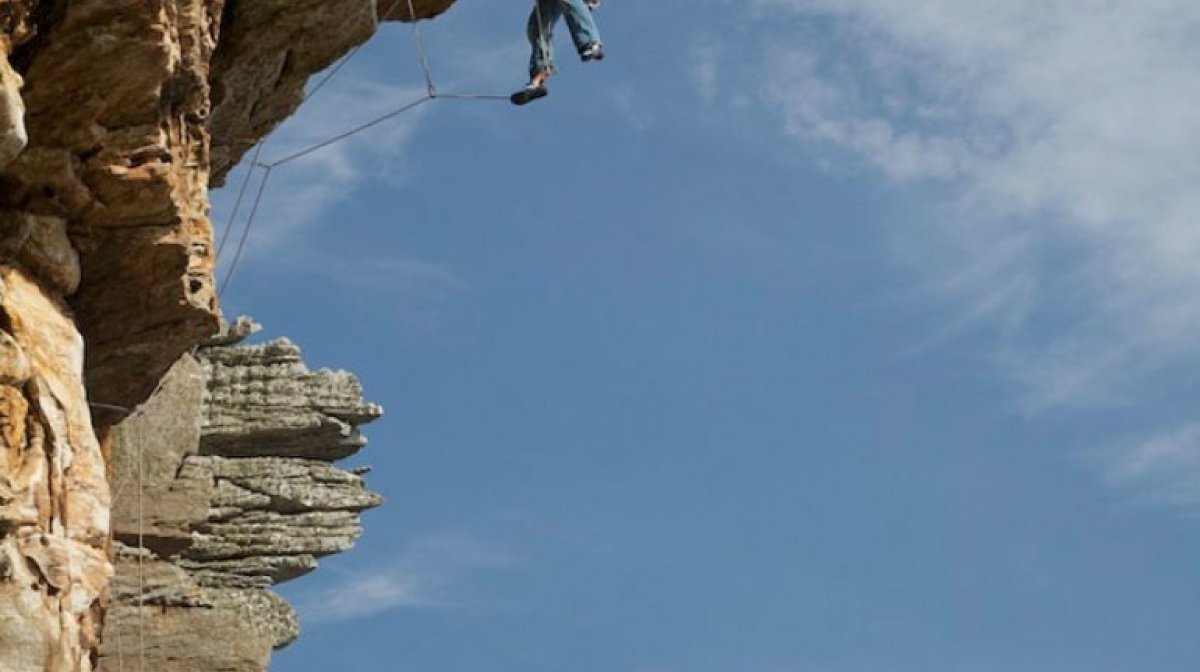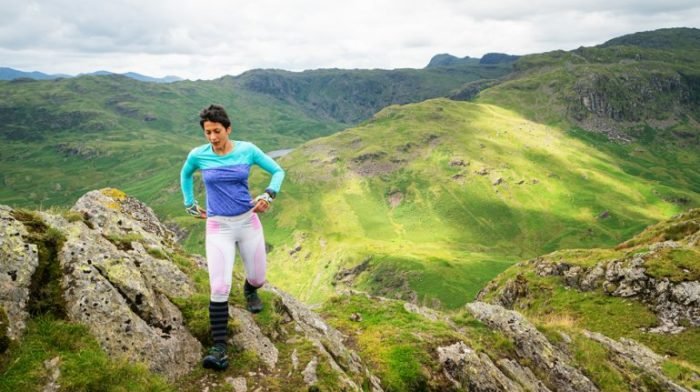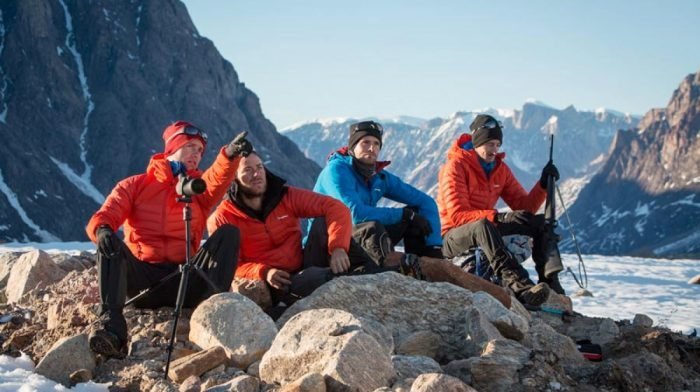Stanage Edge being his first in his early teens but now he has travelled the world doing this most exciting style of climbing. Dougal Tavener shares his knowledge, expertise and his love of the excitement of climbing overhangs.
Ever since I started climbing overhangs have been one of the most exciting styles of climbing for me. I can remember the first time I went to Stanage Edge as an early teen, walking past Flying Buttress Direct I knew I had to step up and give it a go – although it was rated E1 and to this point I had only climbed VS. Over the last 20 years I have climbed some truly amazing overhangs…I think my lust for overhangs stems from liking exposure, so my favourite climbing has always been high, steep routes and preferably Trad.
Here are some tips for climbing overhangs:
Calm Head: Well I think we can say that a calm head is the best start to most things! However, when you’re in the middle of an overhang trying to wiggle in that crucial nut no.4 and your arms start filling up with lactic it’s difficult to stay relaxed and aware.
Time is of the essence: When you’re climbing on the wrong side of vertical naturally you have to rely on your arms much more. No matter how fit and strong you are, the clock is still ticking!
Plan ahead: This can be done before climbing by looking at the route from the bottom. Where are the obvious gear placements, are there any obvious rests, are there places that look much harder than others. It is also important while you are climbing, always look for the best sequence of moves and searching for rests.

Move quickly: Climbing with a more explosive dynamic style can be more energy conserving, it avoids prolonged periods of locking off. Combining this with making longer fewer moves will add to the efficiency.
Footwork: Absolutely crucial. Being fast, accurate and having a big reach (ie flexibility) will help a great deal. Sometimes in-between moves you will be moving your feet from one side of your body to the other, doing this without wasting time and without swinging out from the wall will save loads of energy.
Drop-knee: It can be a really useful move to stop you from solely relying on your biceps the whole way up the crag! Only using your biceps will get you too lactic too quickly. By using a drop knee you can coil up like a spring, then starting from the lower half of your body, uncoil, using this twisting release through your body, up into your next hand hold. Like this you are using your back as much as possible. The back is much stronger and will last much longer than the Biceps.
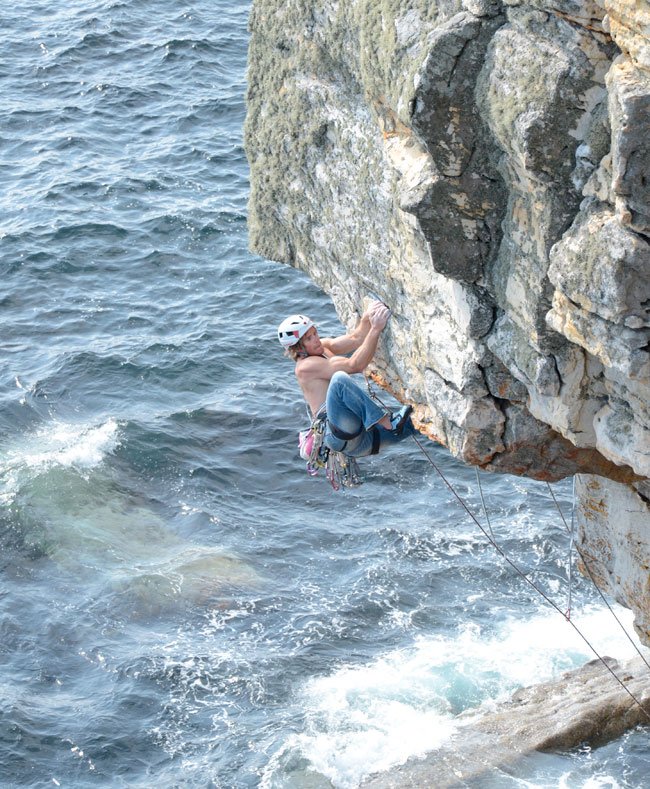
Heel-hook: This is another great way to keep your body in balance (opposing grip) when you have to make a dynamic move. It is a great way to take some weight off your arms when you are resting and a good way to give your toes a rest. Being able to heel-hook well is really important so well worth practising. To do a good heel-hook you need to be quite flexible in turning your toes outwards 90%. Good shoes with a solid heel are also important. You don’t want your heel pulling out of your shoe the whole time.
Toe hooks: These are good way to keep your feet from swinging off the wall and as opposing grip to keep your hands on bad, slopey holds.
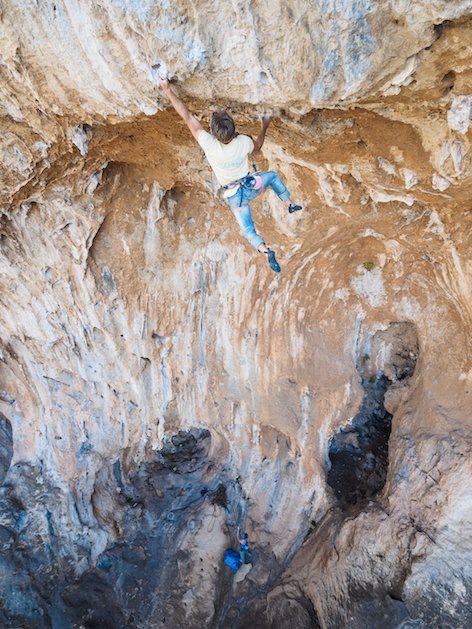
Body tension: When you are not using heel hooks and toe hooks it is through body tension that you are going to keep your toes pushing down on footholds, to keep your feet on in an overhang. The more body tension you have the more you will get out of your feet when you are climbing in an overhang. A lot of this is technique, but a lot is down to training. Body tension is basically core strength. Pilates is a good way to train this.
Resting: It’s important if you get the opportunity. One of the worst things can being taking a rest somewhere where you are not actually recovering, this is pointless, try and avoid it. Generally to rest you need a minimum of somewhere that you can change hands easily, shaking one hand out, while resting the other… and so forth. Sometimes in overhangs you get all manner of strange and weird rests, knee bars, toe hooks, heel hooks, hand jam, arm bar, shoulder bar… basically anything that takes the strain of the part of your body that is getting tired and/or gives you a chance to gather your thoughts is considered a worth while rest.

Mental strength: Above all else this is the most important thing. Believing in succeeding. When you’re on your limit If you get to a move and for a split second you believe you can’t do it, then you’re off! If you believe then I think and feel sometimes that you can unlock power in your muscles that isn’t actually there! Sounds weird I know…Believe haha.
Well I hope this might help give you some insight into climbing overhangs. Good luck and have fun.
